HYGIENE CARE PT1 ❤️
Introduction to Hygiene Care
Hygiene care is an essential aspect of daily life that significantly impacts our overall health and well-being. It involves practices and habits that promote cleanliness and prevent the spread of diseases. Cleanliness is next to Godliness.❤️ Despite its importance, hygiene is often taken for granted, leading to a range of health issues that could be easily avoided with proper care.
⭐Especially since it is summer time, it is the most pivotal point to make. Keeping ourselves clean and fresh is important.
🌟Links and images will be provided for each product.
Importance of Hygiene for Overall Health
Good hygiene is a cornerstone of public health and personal well-being. It helps prevent the spread of infectious diseases, reduces the risk of infections, and promotes a healthy lifestyle. Regular hygiene practices such as handwashing, oral care, and bathing are simple yet powerful actions that can significantly reduce the transmission of pathogens.
- Pathogens are microorganisms, such as bacteria, viruses, fungi, or parasites, that can cause disease in their host organisms. They have the ability to invade tissues, multiply, and disrupt normal bodily functions, leading to illness. Pathogens are a significant focus in microbiology and public health due to their potential to cause infectious diseases.
Hand hygiene, for instance, is one of the most effective ways to prevent the spread of illnesses like colds, flu, and gastrointestinal infections. By washing hands with soap and water, we remove germs that we may have picked up from contaminated surfaces or through direct contact with others. This simple act can drastically reduce the incidence of diseases, especially in communal settings like schools, workplaces, and healthcare facilities.
- "Gastrointestinal" refers to the digestive system, which includes the organs and structures involved in the processing of food and absorption of nutrients in the body. This system starts from the mouth and includes the esophagus, stomach, small intestine, large intestine (colon), rectum, and anus. It plays a crucial role in breaking down food into nutrients that can be used by the body and eliminating waste products.
Oral hygiene is equally important. Poor oral health can lead to dental problems like cavities, gum disease, and bad breath, but it can also have broader health implications. Research has shown links between oral health and conditions such as heart disease, diabetes, and respiratory infections. Brushing teeth at least twice a day, flossing regularly, and using mouthwash are critical steps in maintaining oral hygiene.
Personal hygiene also affects mental health. Maintaining cleanliness can boost self-esteem, reduce anxiety, and improve social interactions. Feeling clean and fresh can enhance one’s overall sense of well-being, contributing to a more positive outlook on life. Furthermore, good hygiene practices are often associated with discipline and routine, which can provide a sense of structure and normalcy.
History of Hygiene Practices
The concept of hygiene has evolved significantly over the centuries. Ancient civilizations recognized the importance of cleanliness, though their practices varied widely.
In ancient Egypt, cleanliness was a sign of spiritual purity. The Egyptians bathed regularly and used a variety of scented oils and ointments to keep their skin clean and hydrated. They also practiced dental care, using toothpicks and mouthwashes made from natural ingredients. Hieroglyphics and ancient texts provide evidence of elaborate personal care routines and the use of cosmetics for both hygiene and aesthetic purposes.
- Hieroglyphics refer to a system of writing used in ancient Egypt. It consists of pictorial symbols or characters that represent words, sounds, or ideas. Hieroglyphics were primarily carved or painted on walls, monuments, and other surfaces and were used for religious texts, historical records, and everyday communication in ancient Egyptian society. The decipherment of hieroglyphics in the early 19th century provided valuable insights into the culture, history, and language of ancient Egypt.
The Greeks and Romans further advanced hygiene practices. The Greeks introduced public baths, which became social and communal activities. The Romans built elaborate aqueducts and sewage systems, demonstrating a sophisticated understanding of the importance of clean water and waste management. Public baths in Rome were accessible to all citizens, promoting a culture of cleanliness and health. Roman military camps were also notable for their sanitation, with designated latrines (kinda like a toilet) and systems to manage waste.
During the Middle Ages, hygiene practices declined in Europe, partly due to the influence of religious beliefs that associated bathing with vanity. This period saw the spread of diseases like the Black Death, highlighting the consequences of poor hygiene. However, hygiene practices persisted in other parts of the world, such as in the Islamic world, where regular washing and cleanliness were integral to religious and cultural practices. Innovations such as the development of soap and the establishment of bathhouses underscored the importance of hygiene in daily life.
- The Black Death, also known as the Bubonic Plague, was one of the deadliest pandemics in human history. It swept through Europe and Asia in the mid-14th century, from 1347 to 1351. The disease was caused by the bacterium *Yersinia pestis*, which was transmitted primarily through fleas that infested rats. The symptoms of the Black Death included fever, chills, swollen and painful lymph nodes (called buboes), and often led to death within a few days. The Black Death is estimated to have killed between 75 million to 200 million people across Europe, Asia, and North Africa, causing widespread social, economic, and cultural upheaval. It significantly altered the course of history, leading to labor shortages, shifts in power, and changes in religious practices and beliefs.
The Renaissance brought renewed interest in personal hygiene, and the Industrial Revolution spurred advancements in public health. The development of germ theory in the 19th century by scientists like Louis Pasteur and Robert Koch revolutionized our understanding of disease transmission, leading to more effective hygiene practices and public health measures. Innovations in plumbing, the introduction of antiseptics, and the establishment of public health institutions marked significant progress in hygiene practices.
- Antiseptics are substances that inhibit the growth and development of microorganisms on living tissue. They are commonly used to clean wounds, cuts, and abrasions to prevent infection. Antiseptics work by either killing microorganisms or inhibiting their growth without causing significant harm to the tissues of the host. Examples of antiseptics include alcohol, iodine solutions, hydrogen peroxide, and chlorhexidine. They are essential in medical settings and first aid practices to promote healing and reduce the risk of infections.
Common Misconceptions About Hygiene
Despite the clear benefits of good hygiene, several misconceptions persist. Addressing these myths is important for promoting better hygiene practices.
One common misconception is that antibacterial products are always better. While antibacterial soaps and sanitizers can be effective, overuse can lead to antibiotic resistance and disrupt the natural balance of good bacteria on our skin. Regular soap and water are often sufficient for everyday hygiene. It’s also important to note that antibacterial products are not effective against viruses, highlighting the need for proper handwashing techniques.
Another myth is that you can overdo hygiene. While excessive washing can strip the skin of natural oils, leading to dryness and irritation, maintaining a balance is key. It’s important to clean areas prone to sweat and bacteria, such as the underarms, feet, and groin, while using moisturizers to keep the skin healthy. Understanding the difference between necessary hygiene practices and excessive cleaning can help maintain skin health.
There’s also a belief that oral hygiene only involves brushing teeth. Comprehensive oral care includes flossing, using mouthwash, and regular dental check-ups. Ignoring any of these components can lead to dental issues and overall health problems. Additionally, diet plays a significant role in oral health; limiting sugary foods and drinks can prevent cavities and other dental issues.
Another common misconception is that cleanliness can prevent all diseases. While good hygiene significantly reduces the risk of many infections, it is not a foolproof method against all illnesses. Vaccinations, a balanced diet, and regular medical check-ups are also crucial for maintaining overall health.
Understanding the importance of hygiene, appreciating its historical context, and dispelling common myths can empower individuals to adopt better hygiene practices. By prioritizing cleanliness, we can improve our health, prevent disease, and enhance our quality of life. Good hygiene is not just a personal responsibility but a public health imperative that benefits society as a whole.
Daily Routines for Personal Cleanliness: Best Practices and Products
Maintaining a daily hygiene routine is essential for overall health and well-being. It involves several key practices, each contributing to keeping our bodies clean and healthy. Here’s a detailed guide on daily routines for personal cleanliness, along with recommendations for the best products to use.
Showering and Bathing
Practices:
• Frequency: It’s generally recommended to shower daily, but depending on your lifestyle, climate, and skin type, you may choose to shower every other day or twice a day.
• Water Temperature: Use warm water, as hot water can strip the skin of natural oils, leading to dryness and irritation.
• Cleansing: Use a gentle body wash or soap to cleanse your skin. Pay special attention to areas prone to sweat and bacteria, such as underarms, groin, and feet.
• Exfoliation: Exfoliate once or twice a week to remove dead skin cells. Use a gentle scrub or a loofah.
• Moisturizing: After showering, apply a moisturizer to keep your skin hydrated.
Recommended Products:
• Body Wash/Soap: Dove Sensitive Skin Body Wash, Cetaphil Gentle Cleansing Bar, Dr. Bronners but you have to dilute it if liquid.
• Exfoliator: St. Ives Fresh Skin Apricot Scrub, The Body Shop Exfoliating Bath Gloves
ST. IVES FRESH SKIN APRICOT SCRUB
THE BODY SHOP EXFOLIATING BATH GLOVES
• Moisturizer: Aveeno Daily Moisturizing Lotion, Neutrogena Hydro Boost Water Gel
AVEENO DAILY MOISTURIZING LOTION
NEUTROGENA HYDRO BOOST WATER GEL
Oral Hygiene: Brushing, Flossing, Mouthwash
Practices:
• Brushing: Brush your teeth at least twice a day for two minutes each time. Use a fluoride toothpaste to protect against cavities.
• Flossing: Floss daily to remove plaque and food particles between teeth that brushing alone cannot reach.
• Mouthwash: Use an antimicrobial mouthwash to reduce bacteria, freshen breath, and promote overall oral health.
Recommended Products:
• Toothpaste: Colgate Total Toothpaste, Sensodyne Pronamel
• Toothbrush: Oral-B Pro 1000 Electric Toothbrush, Philips Sonicare ProtectiveClean 6100
ORAL-B PRO 1000 ELECTRIC TOOTHBRUSH
PHILIPS SONICARE PROTECTIVE CLEAN 6100
• Floss: Oral-B Glide Pro-Health Comfort Plus Floss, GUM Professional Clean Flossers
ORAL-B GLIDE PRO-HEALTH COMFORT PLUS FLOSS
GUM PROFESSIONAL CLEAN FLOSSERS
• Mouthwash: Listerine Total Care Anticavity Mouthwash, TheraBreath Fresh Breath Oral Rinse
LISTERINE TOTAL CARE ANTICAVITY MOUTHWASH
THERABREATH FRESH BREATH ORAL RINSE
Hand Hygiene: Proper Handwashing Techniques and When to Wash
Practices:
• When to Wash: Wash your hands before eating, after using the restroom, after coughing or sneezing, after handling garbage, and whenever they are visibly dirty.
• Technique: Wet your hands with clean, running water. Apply soap and lather by rubbing your hands together. Scrub all surfaces, including the back of your hands, between your fingers, and under your nails, for at least 20 seconds. Rinse thoroughly and dry with a clean towel or air dry.
Recommended Products:
• Hand Soap: Dial Complete Antibacterial Foaming Hand Wash, Mrs. Meyer’s Clean Day Liquid Hand Soap
DIAL COMPLETE ANTIBACTERIAL FOAMING HAND WASH
• Hand Sanitizer: Purell Advanced Hand Sanitizer, Germ-X Original Hand Sanitizer
PURELL ADVANCED HAND SANITIZER
GERM-X ORIGINAL HAND SANITIZER
Nail Care: Trimming and Cleaning
Practices:
• Trimming: Trim your nails regularly to keep them short and neat. Use nail clippers or a nail file. Cut nails straight across to prevent ingrown nails.
• Cleaning: Clean under your nails with a nail brush to remove dirt and bacteria. Moisturize your cuticles to prevent them from becoming dry and cracked.
Recommended Products:
• Nail Clippers: Tweezerman Nail Clipper Set, Seki Edge Stainless Steel Nail Clipper
SEKI EDGE STAINLESS STEEL NAIL CLIPPER
• Nail File: OPI Crystal Nail File, Revlon Emery Board
• Cuticle Care: Burt’s Bees Lemon Butter Cuticle Cream, Sally Hansen Vitamin E Nail & Cuticle Oil
BUTR’S BEES LEMON BUTTER CUTICLE CREAM
SALLY HANSEN VITAMIN E NAIL AND CUTICLE OIL
Hair Care: Washing and Maintenance Tips
Practices:
• Washing Frequency: Wash your hair based on your hair type. Generally, 2-3 times a week is sufficient, but oily hair may require more frequent washing. Or every 2 weeks.
• Shampooing: Use a shampoo suitable for your hair type. Massage the scalp to stimulate blood flow and cleanse thoroughly.
• Conditioning: Apply conditioner to the ends of your hair to keep it hydrated and prevent breakage. Avoid applying conditioner to the scalp to prevent greasiness.
• Maintenance: Use a wide-tooth comb to detangle wet hair gently. Regular trims help prevent split ends.
Recommended Products:
• Shampoo: Head & Shoulders Classic Clean Anti-Dandruff Shampoo, Pantene Pro-V Daily Moisture Renewal Shampoo
HEAD&SHOULDERS CLASSIC CLEAN ANTI-DANDRUFF SHAMPOO
PATENE PRO-V DALIY MOISTURE RENEWAL SHAMPOO
• Conditioner: OGX Renewing Argan Oil of Morocco Conditioner, Aussie 3 Minute Miracle Moist Deep Conditioner
OHX RENEWING AGRAN OIL OF MOROCCO
AUSSIE 3 MINUTE MIRACLE MOIST DEEP CONDITIONER
• Leave-In Treatment: It’s a 10 Miracle Leave-In Product, Garnier Fructis Sleek & Shine Anti-Frizz Serum
IT’S A 10 MIRACLE LEAVE-IN PRODUCT
GARNIER FRUCTIS SLEEK & SHINE ANTI-FRIZZ SERUM
⭐By incorporating these practices and using recommended products, you can maintain a high level of personal cleanliness. These routines not only promote good health but also contribute to a sense of well-being and confidence.
Hygiene for Different Life Stages
Hygiene practices vary significantly throughout different stages of life. Each stage requires specific attention to ensure proper care and maintenance of health. Here’s a comprehensive guide to hygiene tips for infants and toddlers, children, adolescents, adults, and the elderly.
Hygiene Tips for Infants and Toddlers
Practices:
• Bathing: Infants should be bathed 2-3 times a week. Use a mild, hypoallergenic baby wash and ensure the water is warm but not hot. Toddlers may require more frequent baths as they become more active.
• Diaper Care: Change diapers regularly to prevent rashes and infections. Clean the diaper area thoroughly with wipes or a soft cloth and warm water. Allow the skin to dry completely before putting on a new diaper.
• Nail Care: Trim nails weekly using baby nail clippers or a soft emery board to prevent scratches.
• Oral Hygiene: Begin oral care even before teeth appear by wiping gums with a damp cloth. Once teeth emerge, use a soft baby toothbrush and a rice-sized amount of fluoride toothpaste.
• Hand Hygiene: Teach toddlers to wash their hands after using the bathroom, before eating, and after playing outside. Use mild soap and guide them through the process.
Recommended Products:
• Baby Wash: Aveeno Baby Gentle Wash & Shampoo, Johnson’s Head-To-Toe Baby Wash
AVEENO BABY GENTLE WASH & SHAMPOO
JOHNSON’S HEAD-TO-TOE BABY WASH
• Diaper Cream: Desitin Maximum Strength, Aquaphor Baby Healing Ointment
AQUAPHOR BABY HEALING OINTMENT
• Baby Toothbrush: Nuby Infant Training Toothbrush Set, Colgate Baby Toothbrush and Toothpaste Set
NUBY INFANT TRAINING TOOTHBRUSH SET
COLGAYE BABY TOOTHBRUSH AND TOOTHPASTE SET
Teaching Hygiene to Children
Practices:
• Bathing: Encourage daily baths or showers. Teach children to wash all body parts thoroughly.
• Oral Hygiene: Ensure children brush their teeth twice a day and start flossing as soon as they have two teeth that touch. Supervise brushing until they can do it effectively on their own.
• Hand Hygiene: Reinforce proper handwashing techniques and make it a habit to wash hands before meals, after using the restroom, and after playing.
• Nail Care: Teach children to keep their nails short and clean. Regular trimming prevents dirt buildup and reduces the risk of infections.
• Hair Care: Depending on hair type, teach children to wash their hair regularly and comb it to prevent tangles.
Recommended Products:
• Kids’ Shampoo: Johnson’s No More Tangles Shampoo, Suave Kids 3-in-1 Shampoo
JOHNSON’S NO MORE TANGLE SHAMPOO
• Kids’ Toothpaste: Crest Kid’s Cavity Protection Toothpaste
CREST KID’S CAVITY PROTECTION TOOTHPASTE
• Hand Soap: Dial Kids Foaming Hand Wash, Babyganics Foaming Hand Soap
Adolescent Hygiene: Dealing with Puberty Changes
Practices:
• Bathing: Encourage daily showers, especially after physical activities. Teach adolescents to use deodorant or antiperspirant to manage body odor.
• Oral Hygiene: Continue reinforcing the importance of brushing and flossing. Introduce mouthwash for extra protection.
• Skin Care: Educate about acne prevention and treatment. Encourage a skincare routine that includes cleansing, moisturizing, and using products suitable for their skin type.
• Hair Care: Regular hair washing is important, particularly for those with oily hair. Teach about styling and maintaining healthy hair.
• Menstrual Hygiene: For girls, provide education about menstrual hygiene, including the use of sanitary products and maintaining cleanliness.
Recommended Products:
• Deodorant: Dove Men+Care Antiperspirant Deodorant, Secret Clinical Strength Antiperspirant
DOVE MEN+CARE ANTIPERSPIRANT DEODORANT
• Face Wash: Neutrogena Oil-Free Acne Wash, Clean & Clear Essentials Foaming Facial Cleanser
CLEAN & CLEAR ESSENTIALS FOAMING FACIAL CLEANSER
• Menstrual Products: Always Radiant Pads, Tampax Pearl Tampons
Adult Hygiene: Maintaining Routines and Addressing Specific Needs
Practices:
• Bathing: Maintain a daily shower routine. Use moisturizing body washes and lotions to keep skin hydrated.
• Oral Hygiene: Brush teeth twice a day, floss daily, and use mouthwash. Regular dental check-ups are essential.
• Hand Hygiene: Practice regular handwashing, especially after public exposure, before eating, and after using the restroom.
• Nail Care: Keep nails trimmed and clean. Regularly moisturize hands and cuticles.
• Hair Care: Wash hair according to its type and condition. Use conditioners and treatments as needed to maintain hair health.
Recommended Products:
• Body Wash: Dove Deep Moisture Body Wash, Olay Ultra Moisture Body Wash
• Toothpaste: Colgate Total Whitening, Sensodyne Repair and Protect
• Hair Products: Pantene Pro-V Daily Moisture Renewal Shampoo, OGX Coconut Milk Conditioner
PANTENE PRO-V DAILY MOISTURE RENEWAL SHAMPOO
Elderly Hygiene: Special Considerations and Assistance
Practices:
• Bathing: Elderly individuals may not need daily showers. Ensure they have a safe, comfortable bathing environment with grab bars and non-slip mats. Use gentle, moisturizing cleansers to protect delicate skin.
• Oral Hygiene: Regular brushing and flossing remain important. For those with dentures, ensure they are cleaned daily. Regular dental visits are crucial.
• Hand Hygiene: Continue regular handwashing, especially after bathroom use and before meals. Use moisturizing hand soap to prevent dryness.
• Nail Care: Trim nails regularly and inspect for signs of infection. Moisturize hands and nails to prevent cracking.
• Hair Care: Gentle shampoos and conditioners are best. Help with hair washing and grooming if mobility is an issue.
Recommended Products:
• Gentle Body Wash: Cetaphil Gentle Skin Cleanser, Eucerin Skin Calming Body Wash
EUCERIN SKIN CALMING BODY WASH
• Denture Care: Polident Denture Cleanser, Fixodent Denture Adhesive
• Moisturizing Hand Soap: Dove Foaming Hand Wash, Softsoap Moisturizing Liquid Hand Soap
SOFTSOAP MOISTURZING LIQUID HAND
⭐Each life stage requires tailored hygiene practices to ensure health and comfort. By following these guidelines and using the recommended products, individuals can maintain good hygiene throughout their lives.
Hygiene for Specific Situations
Maintaining hygiene is crucial in various specific situations to ensure health and well-being. Here’s an in-depth guide on how to manage hygiene during travel, in the workplace, for athletes and fitness enthusiasts, and during illness or recovery.
Hygiene During Travel
Traveling exposes individuals to different environments, which can pose various hygiene challenges. Proper hygiene practices can help prevent illness and make travel more enjoyable.
Practices:
• Hand Hygiene: Carry hand sanitizer with at least 60% alcohol and use it frequently, especially after touching surfaces in public places such as airports, planes, buses, and trains. Wash hands with soap and water whenever possible.
• Face Masks: Use face masks in crowded places or during flights to protect against airborne pathogens.
• Surface Cleaning: Wipe down frequently touched surfaces such as airplane tray tables, seat belts, and hotel room doorknobs with disinfectant wipes.
• Personal Items: Avoid placing personal items like phones, wallets, and bags on public surfaces. Use a travel case for toiletries and keep them separate from other items.
• Hydration and Skin Care: Travel can dehydrate the skin. Drink plenty of water and use a good moisturizer to keep your skin hydrated.
Recommended Products:
• Hand Sanitizer: Purell Advanced Hand Sanitizer, Germ-X Original Hand Sanitizer
(Links are above and images shown already)
• Disinfectant Wipes: Lysol Disinfecting Wipes, Clorox Disinfecting Wipes
• Face Masks: KN95 Face Masks, Disposable Surgical Masks
• Travel Toiletry Case: Relavel Travel Makeup Train Case, BAGSMART Toiletry Bag
RELAVEL TRAVEL MAKEUP TRAIN CASE
Maintaining Hygiene in the Workplace
The workplace can be a hotspot for germs, especially in shared spaces. Good hygiene practices can help prevent the spread of illness and create a healthier work environment.
Practices:
• Hand Hygiene: Wash hands frequently, especially after using shared equipment or touching communal surfaces. Keep hand sanitizer at your desk.
• Clean Workstation: Regularly clean and disinfect your workstation, including your keyboard, mouse, and phone. Wipe down your desk at least once a day.
• Restroom Hygiene: Wash hands thoroughly after using the restroom. Use a paper towel to turn off faucets and open the door to avoid recontamination.
• Food Hygiene: Store food properly and clean up spills immediately in the office kitchen. Avoid eating at your desk to prevent attracting pests and spreading germs.
• Personal Items: Keep personal items such as coats, bags, and mobile phones stored properly and away from common areas.
Recommended Products:
• Desk Cleaning Supplies: Windex Electronics Wipes, Microfiber Cleaning Cloths
• Hand Sanitizer: Bath & Body Works PocketBac Hand Sanitizers, EO Organic Hand Sanitizer Spray
BATH AND BODY WORKS POCKETBAC HAND SANITIZERS
EO ORGANIC HAND SANITIZER SPRAY
• Disinfectant Spray: Lysol Disinfectant Spray, Microban 24 Hour Multi-Purpose Cleaner
MIRCOBAN 24 HR MULTI-PURPOSE CLEANER
Hygiene for Athletes and Fitness Enthusiasts
Athletes and fitness enthusiasts need to maintain high hygiene standards to prevent infections and stay healthy.
Practices:
• Showering: Shower immediately after workouts to remove sweat and bacteria. Use an antibacterial body wash to prevent skin infections.
• Clothing: Wear clean workout clothes for each session. Wash gym clothes and towels after each use.
• Equipment Hygiene: Wipe down gym equipment before and after use with disinfectant wipes. This includes machines, weights, and mats.
• Foot Care: Wear moisture-wicking socks and well-ventilated shoes to prevent fungal infections. Change socks daily and ensure your shoes dry out between uses.
• Hydration: Use a personal water bottle and avoid sharing it with others. Clean your water bottle regularly.
Recommended Products:
• Antibacterial Body Wash: Dial Antibacterial Deodorant Soap, Defense Soap Body Wash
DIAL ANTIBACTERIAL DEODORANT SOAP
• Disinfectant Wipes: Lysol Disinfecting Wipes, Seventh Generation Disinfecting Wipes
SEVENTH GENERATION DISINFECTING WIPES
• Moisture-Wicking Socks: Balega Hidden Comfort Running Socks, Under Armour Performance Tech Socks
BALEGA HIDDEN COMFORT RUNNING SOCK
UNDER ARMOUR PERFORMANCE TECH SOCKS
• Water Bottle: Hydro Flask Water Bottle, CamelBak Eddy+ Water Bottle
Hygiene During Illness or Recovery
Proper hygiene is critical during illness or recovery to prevent the spread of illness and promote healing.
Practices:
• Hand Hygiene: Wash hands frequently with soap and water, especially after coughing, sneezing, or blowing your nose. Use hand sanitizer if soap and water are not available.
• Isolation: If you are contagious, isolate yourself from others as much as possible to prevent spreading the illness. Use separate utensils, towels, and bedding.
• Disinfection: Regularly disinfect commonly touched surfaces, such as doorknobs, light switches, and remote controls.
• Personal Care: Keep tissues, hand sanitizer, and disinfectant wipes readily available. Dispose of used tissues immediately in a lined trash can.
• Hydration and Rest: Drink plenty of fluids to stay hydrated and get ample rest to support your immune system.
Recommended Products:
• Hand Sanitizer: Germ-X Hand Sanitizer, Wet Ones Antibacterial Hand
• Disinfectant Spray: Clorox Disinfecting Spray, Lysol Disinfectant Spray
(Shown above with links)
• Facial Tissues: Kleenex Ultra Soft Facial Tissues, Puffs Plus Lotion Tissues
KLEENEX ULTRA SOFT FACIAL TISSUES
• Thermometer: Braun Digital Ear Thermometer, Vicks SpeedRead Thermometer
⭐Maintaining proper hygiene in various specific situations is essential for health and well-being. By following these detailed practices and using the recommended products, individuals can ensure they stay clean, healthy, and protected against illness.
Here is a link to more products you could purchase to increase better hygiene : ⬇️
Pt2 coming soon
Disclaimer : This is a suggestion you don't have to take in what I say.
By : Gabriella Henry

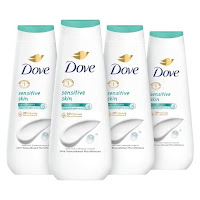











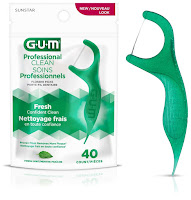





































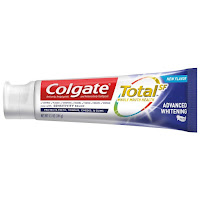



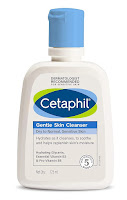
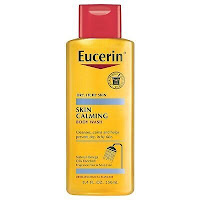




















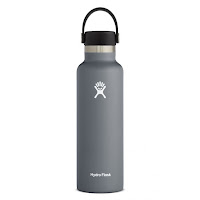



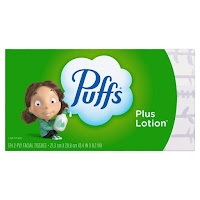



Love this ❤️😍😍. Thank you so much for all of this, can’t wait for part 2 !!!
ReplyDeleteKeep up the great work !!!
ReplyDeleteBy the grace of God your platform will blow up and be one of the biggest and most inspirational platforms there is
ReplyDelete